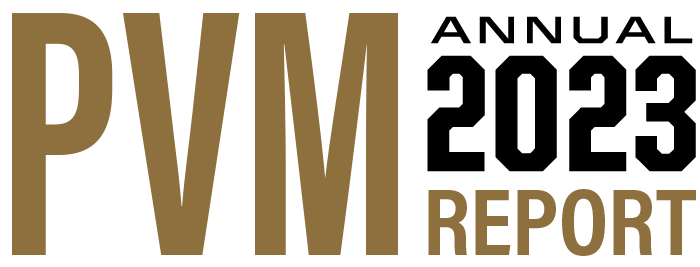PVM Remakes Veterinary Education to Position Graduates for 21st Century Success
When Dr. Willie Reed stepped into the Purdue Veterinary Medicine deanship in 2007, he knew the faculty had worked hard on designing and making improvements to the curriculum over the college’s nearly 50-year history to ensure that students were getting the best education possible. Yet, he also had the conviction that more could and needed to be done to better position current veterinary graduates for success.
Subsequently, under the leadership of the associate dean for academic affairs, Dr. Kathy Salisbury, herself a boarded small animal veterinary surgeon and long-time faculty member, and following the guidance provided by the college’s strategic plan, a 21st Century curricular makeover was designed and implemented. In 2018, after months of dedicated, creative and innovative effort, the faculty approved the new curricular plan, which took effect with what was then the incoming first-year class, the Class of 2022. Since then additional improvements, including the integration of new technology and enhancements to the Veterinary Nursing degree programs, have accentuated the success of the revamped curriculum, enabling the college to graduate true 21st Century veterinarians and veterinary nurses.
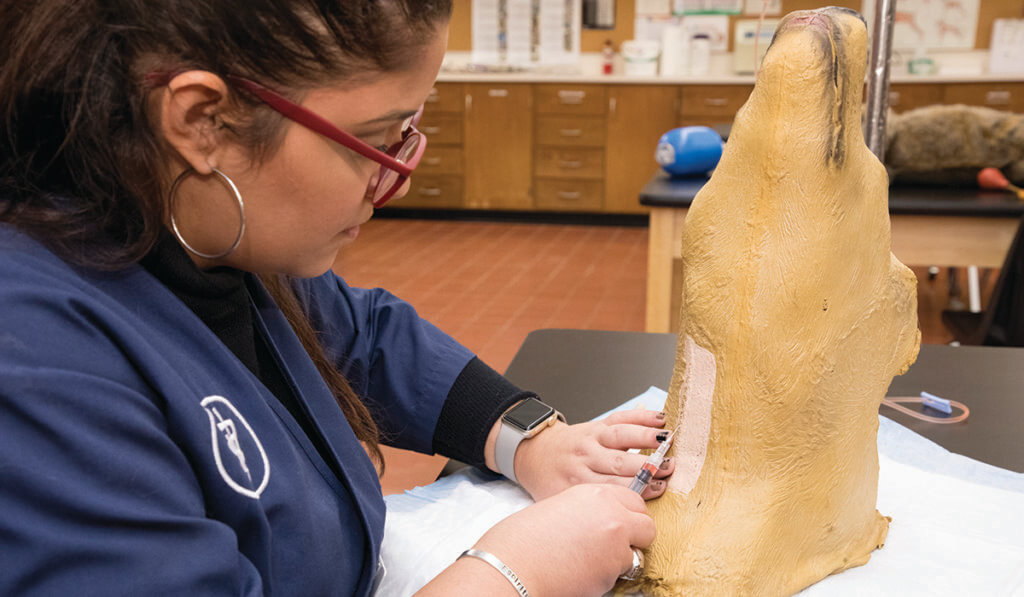
“The curricular remake has provided a strong foundation in the major domestic species and enabled students to tailor their course of study to their future career goals,” said Dr. Salisbury. “The changes were carefully designed to better prepare our DVM students for the clinical setting, fully equipping them as graduates to confidently enter the workforce and effectively work in a team setting with veterinary nurses.”
A key component of the curricular revision involves a series of six courses called Veterinary Skills and Competencies (VSAC), which occur each semester during the first three years. “The VSAC courses promote the development of our DVM students’ clinical skills as well as non-technical competencies, such as communication skills, business acumen, professionalism, and wellness skills,” Dr. Salisbury said. “Students gain hands-on experience with animals throughout these courses. Instruction is provided through faculty-led laboratories, faculty-led discussion periods, and online modules completed by independent study.” Dean Reed provided resources to develop a centralized teaching team consisting of four lecturers and four veterinary nurses. Additional veterinary nurses and faculty from the academic departments and the hospital also teach in the VSAC courses.
To support these courses as well as the Veterinary Nursing program, a Clinical Skills Laboratory (CSL) was created to give students multiple opportunities to practice skills so that they could truly achieve competency. Dr. Jim Weisman (PU DVM ’97), who serves as assistant dean for clinical education and clinical associate professor, co-chaired with Dr. Wendy Townsend, professor of ophthalmology, a faculty group that developed the VSAC course series. “As a complement to the VSAC courses, the Clinical Skills Laboratory has enabled students to gain additional mentoring and practice they need to fully master the skill sets required in the fourth-year clinical setting, which puts them squarely on the path to great success upon graduation,” Dr. Weisman said.
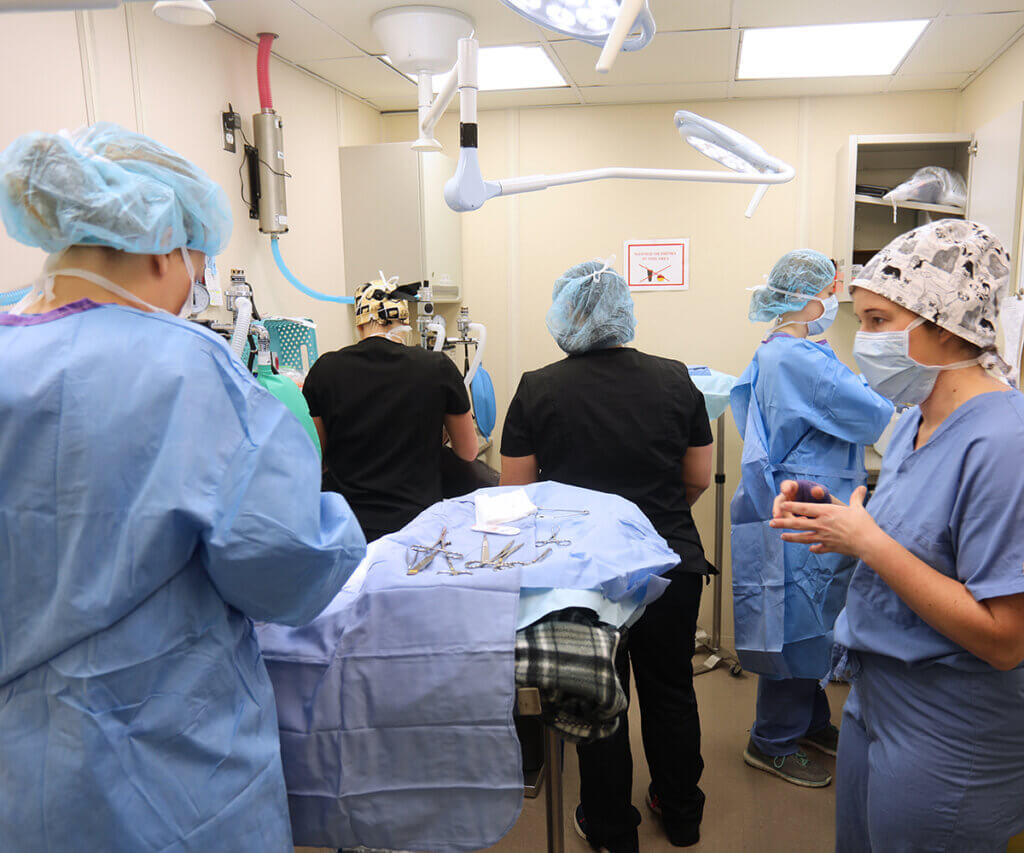
Veterinary nursing students also benefit from the Clinical Skills Lab. “Since 2019, I have arranged Open Skills Practice sessions every semester for veterinary nursing students,” said Danielle Buchanan RVT, VTS (SAIM), who serves as the Clinical Skills Laboratory manager. “That means I or one of the veterinary nursing instructors is in the CSL for a period of time once a week to help the students with their clinical skills on an as needed basis.” Large Animal Instructor Rose Giroux, RVT, utilizes the Clinical Skills Lab when teaching her veterinary nursing students invasive procedures such as venipuncture, injections, and IV catheter placement. “Using the horse and cow head models allows the students to learn how to hold a syringe and the proper place to give injections, and how to place an IV catheter, as well as giving the students the confidence to perform these skills on live animals,” Ms. Giroux said. “Having the CSL open on certain days and times for veterinary nursing students enables them to practice their skills, as well as mentor any of their fellow classmates who may need assistance.”
Another key development that enhanced veterinary education involved a surgery unit on wheels, named Priority 4 Paws (P4P). The mobile surgery suite was acquired in 2012 and reflected the vision of then professor of small animal surgery, Dr. Lyn Freeman, now retired. Pressed into service as part of the college’s Shelter Medicine program, the unit provided a means for veterinary students to perform spay and neuter surgeries needed to prepare shelter animals for adoption, thereby significantly increasing their surgery experience.
The COVID-19 pandemic altered P4P by necessitating a transition to a stationary surgery service based out of the college, where shelter workers would bring the shelter pets for surgery, avoiding the need for students and staff to work in the close confines of the mobile surgery unit. Yet, even with the change in format, the program has stood the test of time and continues to receive rave reviews from students and shelters alike.
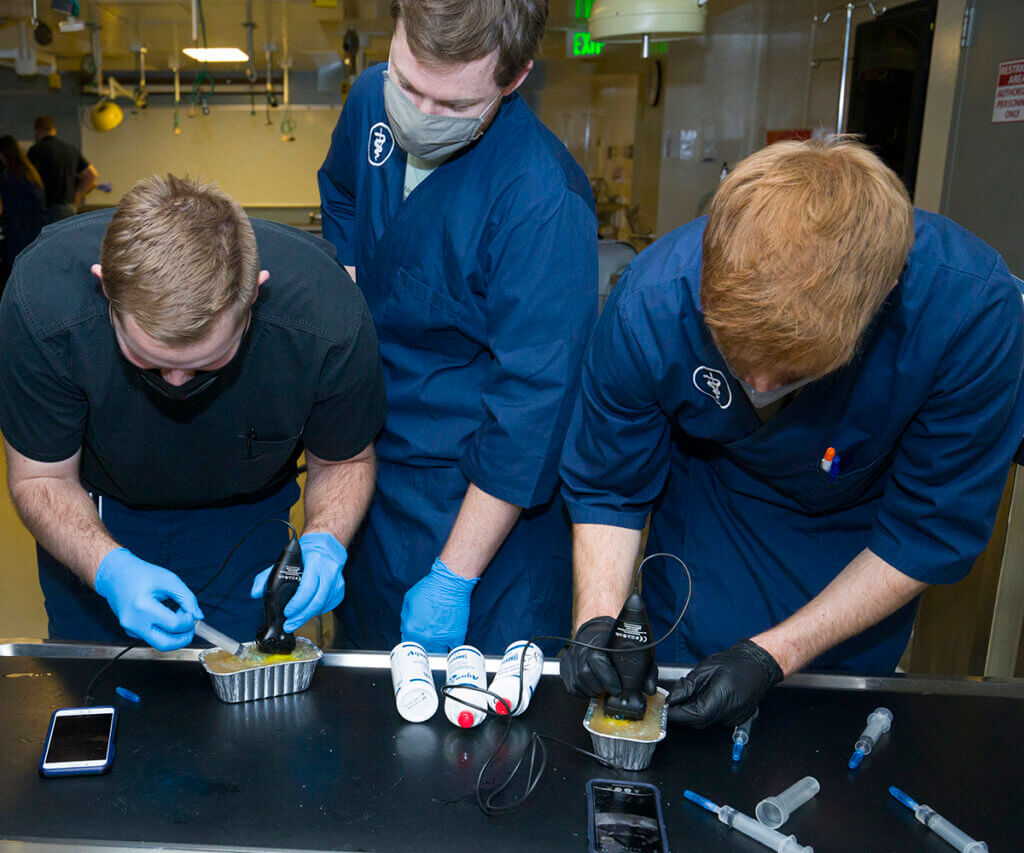
Today, the leader of P4P is a Purdue veterinary graduate, Dr. Emily Curry, who actually took part in the Shelter Medicine and Surgery rotation as a student in the DVM Class of 2014. ”The program gives the students an amazing boost in their confidence while also providing vital exposure to the need for shelter medicine,” said Dr. Curry, clinical assistant professor of shelter medicine/surgery. The shelter medicine program has grown to include two full-time veterinarians with the addition of Dr. Ryan Hill. On a typical three-week rotation, students perform an average of 36 surgeries and gain invaluable primary care and case management experience. “Exciting expansion of the Shelter Medicine program is on the horizon through a partnership with the new Humane Society for Greater Lafayette, which has a new facility under construction,” Dr. Salisbury said.
Beginning with the DVM Class of 2024, the fourth-year curriculum has transitioned to a competency-based assessment model. Across the United States, many veterinary colleges are adopting the American Association of Veterinary Medical Colleges’ (AAVMC) Competency-Based Veterinary Education model. “This competency-based framework focuses on the student’s ability to demonstrate the appropriate skills, attributes, and clinical judgment required of the entry-level veterinarian,” said Dr. Weisman. By focusing on progressive competency development rather than achieving a letter grade every three weeks, the fourth-year curriculum allows for different rates of learning and ensures that each student achieves competency by the time of graduation. “In response to specific constructive feedback from faculty and staff, our students can focus on specific areas for improvement,” Dr. Weisman explained. “Students who need help with specific competencies can be given targeted support and coaching. This assessment change is yet another example of Purdue being on the leading edge of contemporary veterinary medical education.”
Additionally, the college has appropriated advanced technology to enhance learning. A new generation of ultrasound capability is being used in the first year of the DVM program and in the Veterinary Nursing program in courses such as anatomy and physiology to foster students’ three-dimensional understanding of anatomy. The ultrasound device is the Butterfly iQ+ Vet — a first-of-its-kind single probe, whole-body, multi-species imaging system that can be operated by a smartphone.
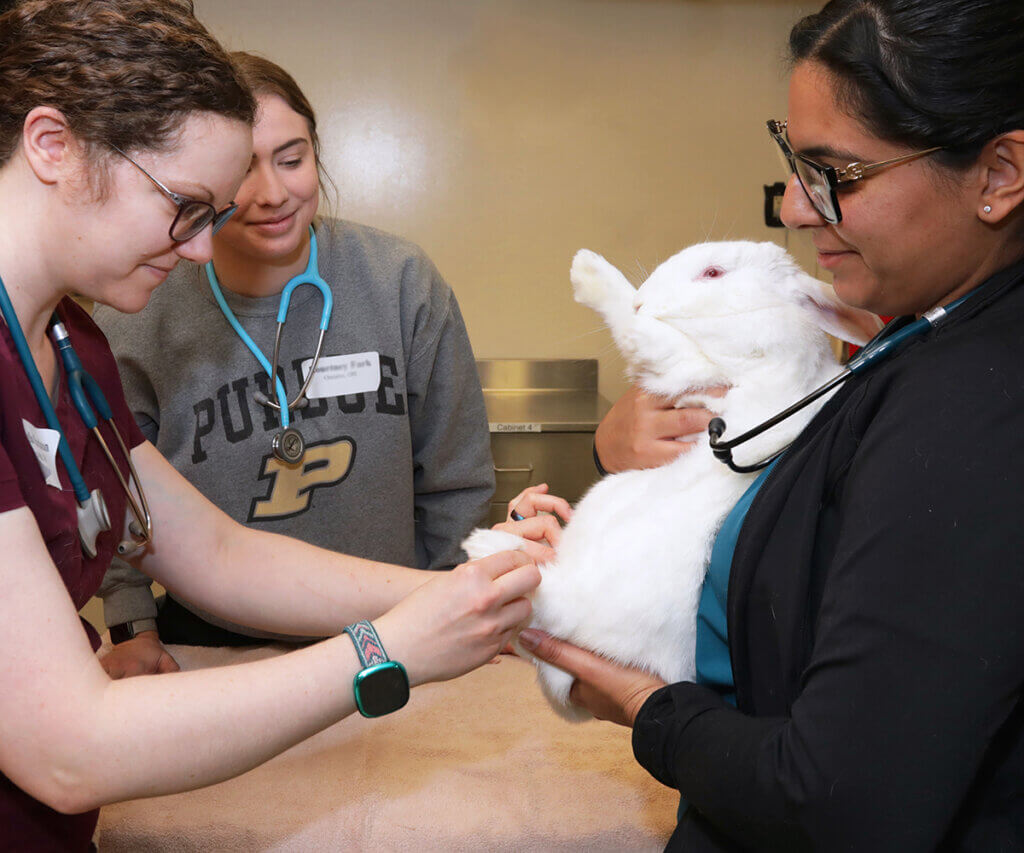
The college’s curricular initiatives also have proven ahead of their time in regard to online education. Long before distance learning became a hot topic, the college launched what was then called the Veterinary Technology Distance Learning Program in 1999, to bring the benefits of the college’s Veterinary Technology program to prospective students unable to leave their homes and veterinary clinics to enroll in the on-campus program. Now, under Dean Reed’s leadership, the program is being modernized through a process that includes giving the online courses a makeover to reflect the latest online learning approaches. With these improvements, the Veterinary Nursing Distance Learning Program (VNDL), as it is called today, boasts 830 active students around the globe, including 120 from Indiana. “Graduates of the VNDL program have excelled at passing the licensing examination, the Veterinary Technology National Examination, with a three-year average pass rate of 96.4%, the highest in the nation for online programs,” said Dr. Chad Brown, director of Purdue Veterinary Nursing Programs.
Dr. Brown points out that as the veterinary profession deals with a shortage of veterinary nurses (registered veterinary technicians), the VNDL program holds promise as a pivotal strategy for addressing Indiana’s RVT shortage in the near term. “Compared to on-campus programs, these digital platforms offer increased flexibility and can accommodate many more students, regardless of where the students live,” Dr. Brown explained.
Another visionary change in the college’s educational program involved Dean Reed’s foresight in allocating funds to establish a wellness program to support all PVM students (veterinary nursing, DVM, graduate, interns, and residents). The first full-time PVM psychologist was hired in 2013. Since then, the need for student support has continued to grow and a second therapist was hired in 2019. The wellness program currently has two full-time licensed psychologists, Dr. Colleen Maguire-Jackson and Dr. Susan Prieto-Welch, who provide therapy free-of-charge to PVM students and teach in the veterinary nursing and DVM curricula. In 2022, a student success/learning specialist, Corey Sanchez, MA, was added to the student support team to help students develop their learning skills.

Under Dean Reed’s leadership, the college has persistently pursued curricular excellence and innovation in the midst of monumental change involving new learning strategies, technological advances, online instruction, and even a worldwide pandemic. “The faculty in our college are committed to graduating students abundantly prepared to walk confidently into any career opportunity in the veterinary medical profession and work very productively from day one,” said Dr. Weisman.
Correspondingly, demand for a Purdue veterinary education has grown significantly. Purdue University identifies the DVM program as one of the most competitive among the university’s academic programs, with applications rising more than 200% in the past decade. For the current application cycle, the college received 1,777 applications for the 84 available seats.
“I am so proud of our faculty for the outstanding work they have done to design and implement curricular change that puts our college solidly at the forefront of veterinary education,” said Dean Reed. “Building on our college’s strong heritage of outstanding hands-on learning and real-world mentoring, our faculty have set a new standard for educating veterinarians and veterinary nurses truly capable of taking giant leaps in their veterinary careers, leading the way to a brighter future for the veterinary medical profession and the people and animals it serves.”

